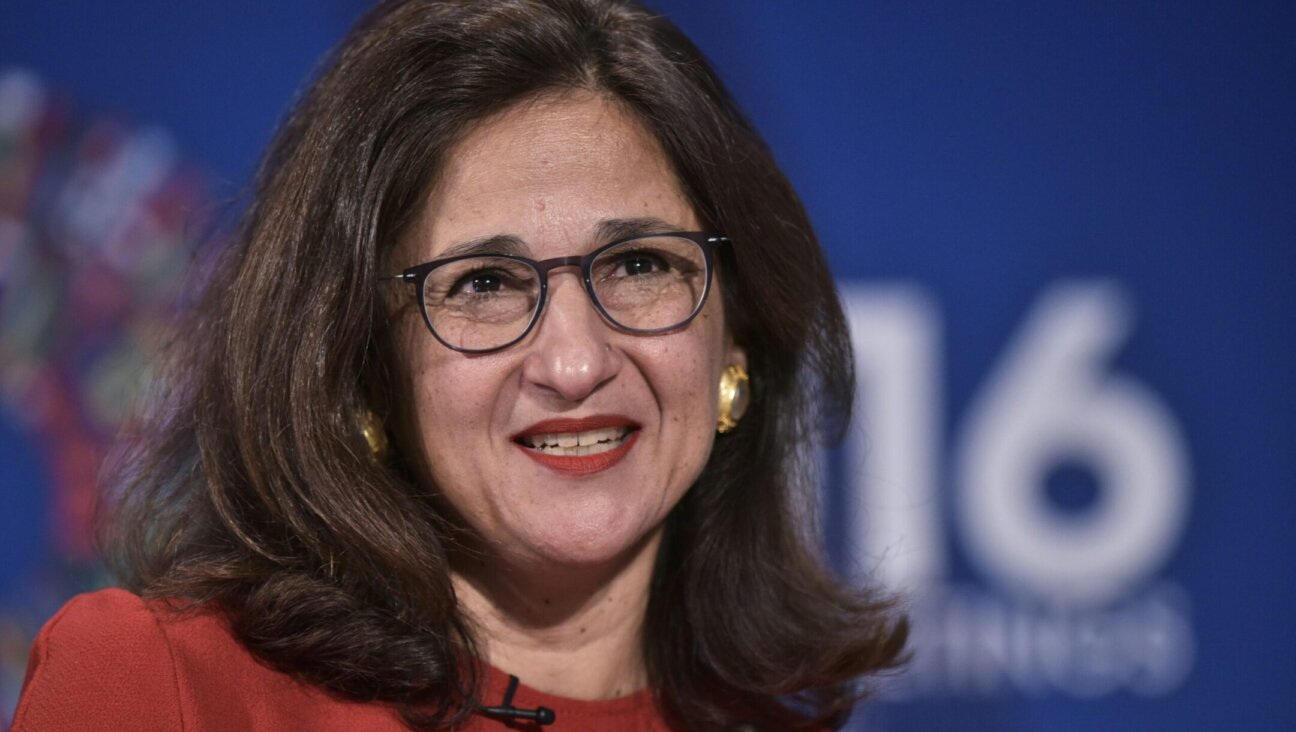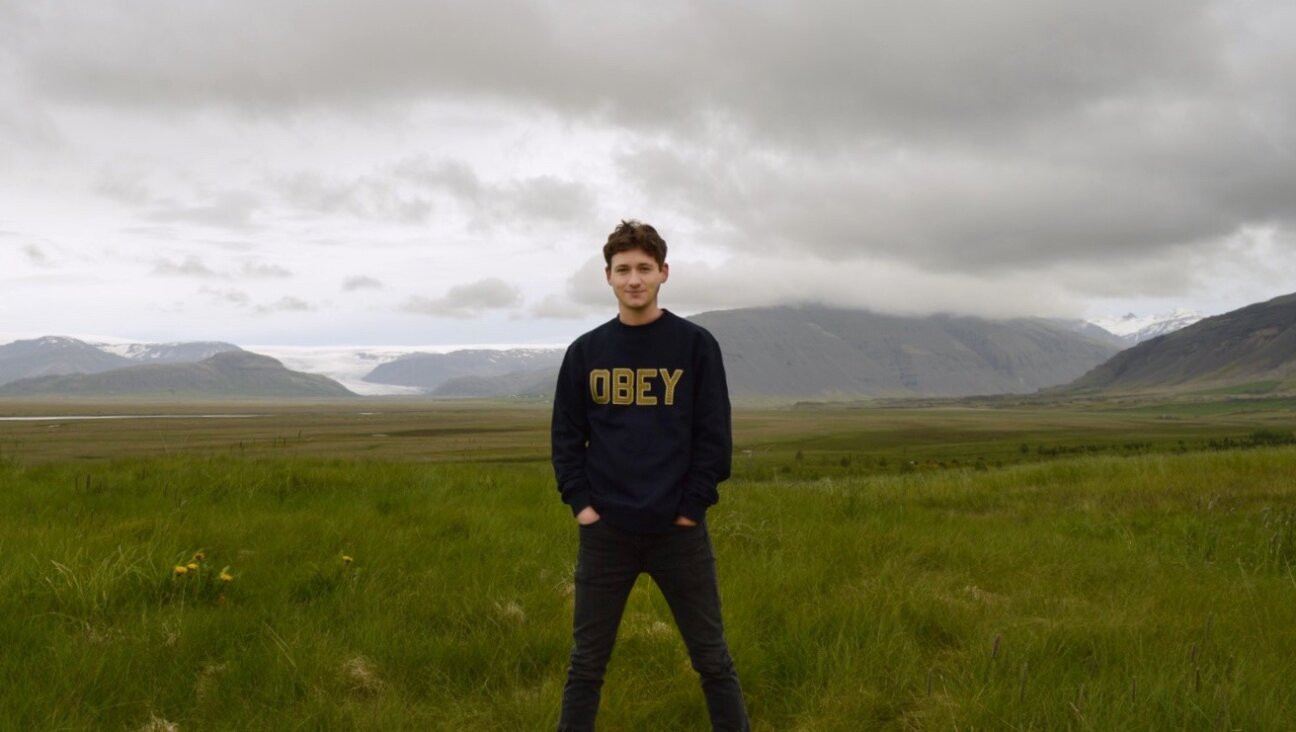Polish Museum Draws Scant Protest
On Tuesday, a “Who’s Who” of American Jewish philanthropists joined Polish President Lech Kaczynski in Warsaw to break ground on the Museum of the History of Polish Jews, an institution being billed as a foundation on which to rebuild understanding between Poles and Jews.
The scene would have been hard to imagine just a generation ago, when Israeli Prime Minister Yitzhak Shamir famously quipped that Poles sucked antisemitism in with their mothers’ milk. Indeed, the convergence of Polish and Jewish support for a museum dedicated to Polish Jewish history — built in large part with public Polish funds, no less, on the former site of the Warsaw Ghetto — has drawn remarkably little protest from two peoples long distrustful of each other.
In a land that for many Jews is synonymous with Auschwitz, the common vision for the Museum of the History of Polish Jews extends all the way to the decision to give minimal curatorial attention to the Shoah. The museum’s mission even passes muster with Marek Edelman, the man with perhaps the greatest claim to guardianship over the museum site.
“I don’t know what percent — 15%, 20% — of the museum’s exhibits should focus on the Holocaust, but I know it has to be a museum about the entire long history of Polish Jews,” Edelman, the last surviving leader of the Warsaw Ghetto Uprising, told the Forward. “This rich history has to be recalled, not only the disaster.”
The Museum of the History of Polish Jews will recall a millennium’s worth of that history when it opens its doors in 2009. Designed by Finnish architects Rainer Mahlamäki and Ilmari Lahdelman, it is being promoted as the world’s first museum dedicated entirely to Polish Jewish civilization and is expected to bring in a half-million visitors annually, including an estimated 30,000 Americans and 50,000 Israelis.
The grand ambitions for the $65 million, 140,000-square-foot institution are not limited to attendance figures. American Jewish supporters of the museum, who have led a fundraising effort that to date has netted at least $45.5 million, believe it will help engender a shift in communal priorities.
“We’re poised at the doorway of a new era, where exploring our Eastern European Jewish history will become as much a part of our community as Holocaust education became after it took off in the 1990s,” said the Krakow-born Tad Taube, a major backer of the museum and a leading figure in the revival of Jewish life in Poland. “The new museum is helping to open that door.”
To judge by the public money being poured into the museum, such sentiments are shared by the Polish government. The Ministry of Culture has donated $13 million, as has the City of Warsaw. The municipality has also donated the 3.2 acres on which the museum is being built and pledged to pick up 90% of its estimated $4 million annual operating costs.
The allocations have been met with notably scant criticism in a country with a steadily rising public debt that is threatening to reach 60% of GDP. Public support for the museum, according to Warsaw-based journalist Witold Zygulski, is an outgrowth of increasing awareness among Poles of the need to create an institutional memory of Poland’s past.
“The need for a museum of this kind has been clear for at least two decades, since Poland became independent,” said Zygulski, news editor of the English-language weekly Warsaw Voice. “I haven’t heard about any controversy, apart from the shouting of a very small group of nationalists.”
Equally notable for its absence, given the museum’s location on the former site of the Warsaw Ghetto, is criticism from Jewish quarters about the museum’s relative lack of attention to the Holocaust. The period between 1939 and 1945 is addressed in only one of the eight galleries that will constitute the museum’s 40,000-square-foot permanent exhibition, which is being planned by a team led by New York University professor Barbara Kirshenblatt-Gimblett.
To hear it told by Feliks Tych, a member of the group that first conceived of the museum in the early 1990s, building on the Warsaw Ghetto site is anything but at odds with the exhibitions’ sidelining of the war years. Indeed, he argues, it is the museum’s very location that allows Kirshenblatt-Gimblett’s team to focus on the centuries when Jewish life flourished in Poland.
“The fact that this museum is in the very heart of the Jewish quarter before the war, where most of the Warsaw Jews were living, will stress the importance of the Holocaust,” said Tych, a board member of the Association of the Jewish Historical Institute, the Polish organization behind the museum. “Every narrative will start in the place where this museum was erected.”

I hope you appreciated this article. Before you go, I’d like to ask you to please support the Forward’s award-winning journalism this Passover.
In this age of misinformation, our work is needed like never before. We report on the news that matters most to American Jews, driven by truth, not ideology.
At a time when newsrooms are closing or cutting back, the Forward has removed its paywall. That means for the first time in our 126-year history, Forward journalism is free to everyone, everywhere. With an ongoing war, rising antisemitism, and a flood of disinformation that may affect the upcoming election, we believe that free and open access to Jewish journalism is imperative.
Readers like you make it all possible. Right now, we’re in the middle of our Passover Pledge Drive and we need 500 people to step up and make a gift to sustain our trustworthy, independent journalism.
Make a gift of any size and become a Forward member today. You’ll support our mission to tell the American Jewish story fully and fairly.
— Rachel Fishman Feddersen, Publisher and CEO
Join our mission to tell the Jewish story fully and fairly.
Our Goal: 500 gifts during our Passover Pledge Drive!






















